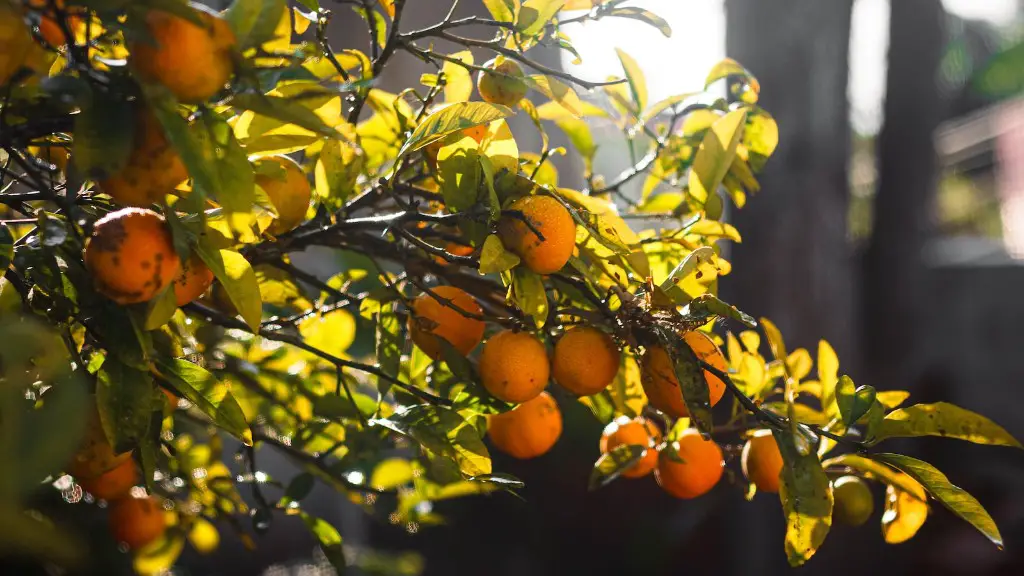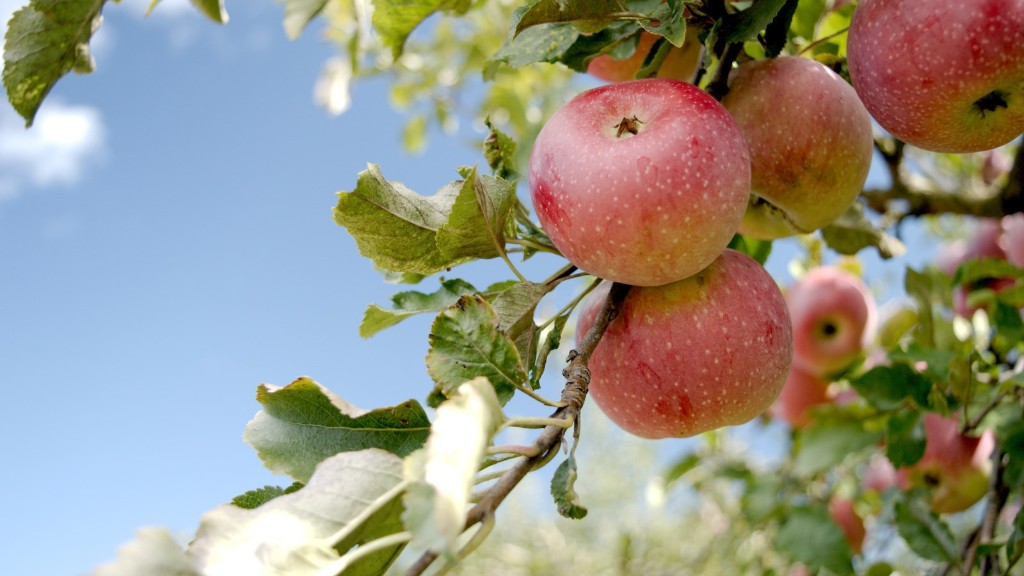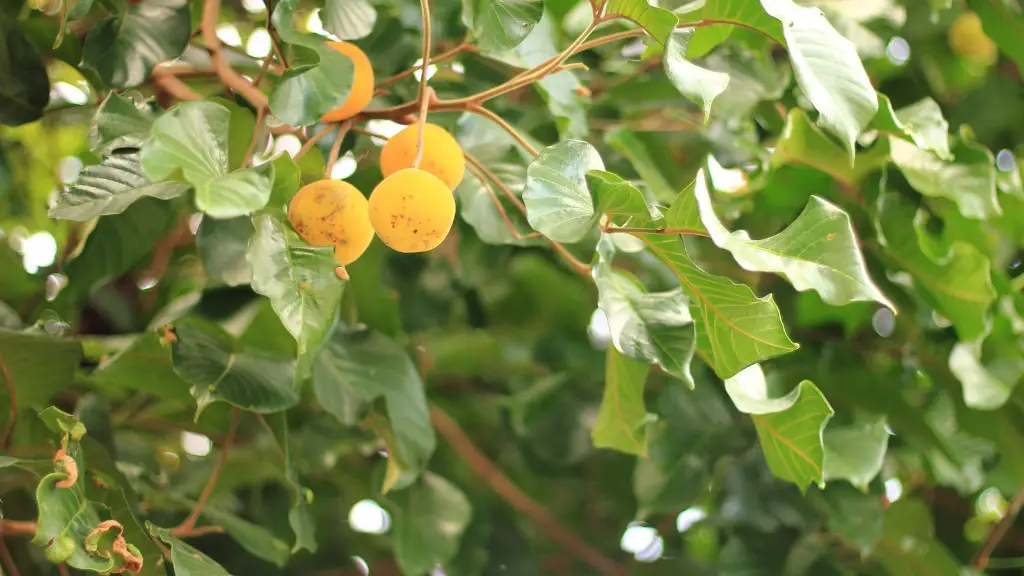Avocado has gained popularity in recent years due to its nutrient-rich profile and health benefits, and its popularity has caused a worldwide demand for it. This, in turn, has sparked a lot of questions about how to cultivate the crop and its needs. One of the most commonly raised questions is – does an average avocado tree require a lot of water?
The short answer is – yes and no. The amount of water an avocado tree needs depends largely on the climate it’s growing in. In warm or dryer climates, avocado trees need more water than those planted in temperate or cooler ones. In addition, the amount of water an avocado tree requires changes with the age of the tree, as young trees will need more water than mature ones.
According to horticulturists at the University of California, while in the first two years of its life an avocado tree needs roughly 25 gallons of water per day, adult trees can survive with as little as 4 gallons. Generally, the tree requires regular water during its growing season, watering every three to four days. During the summer months, when temperatures are warmer and the tree is actively growing, this could be raised to 5-6 gallons of water every two days.
Considering the challenging environmental conditions that avocado trees are often exposed to, it is important to have the right irrigation system in place. From drip irrigation to overhead sprinklers, the type of system should be designed with the specific needs of the crop in mind. It’s also important to choose an irrigation method that can accurately target the roots of the tree and make sure they are getting the water they need, instead of simply watering the tree’s leaves.
All in all, avocado trees require regular and adequate watering to reach their full potential. The exact amount of water it needs depends on a variety of factors, such as climate and age, and having the right irrigation system in place is key for the tree’s culinary success.
Soil
For an avocado tree to thrive, it’s essential to have the right kind of soil. Loamy, well-drained soil with a pH of 6.0-7.0 is the ideal substrate for avocado trees. Loamy soil is high in organic matter, which is important for supplying the tree with the nutrients it needs for healthy growth. In addition, the soil should be well-drained, as waterlogged soil can cause the tree to become over-hydrated and its roots to rot.
Although a loamy soil is the preferred option, avocado trees can also do well in more compact terrains, such as sand and clay. In such cases, added organic matter and drainage must be provided to ensure the tree’s proper growth. Additionally, regular soil tests should be done to assess the type and level of nutrients available to the tree, and provide any necessary fertilizer when needed.
With a well-composed soil and adequate water, an avocado tree can be expected to produce good harvests and meet seasonal demands.
Temperature Requirements
The temperature at which an avocado tree can survive and produce fruit is determined by its variety. Generally, however, most avocado trees prefer warm climates (30-90°F). A cooler, temperate climate is also suitable for some avocado varieties, as long as temperatures do not usually drop below 28°F. If planted in a cooler climate, it is best to choose an avocado cultivar known to be cold-hardy.
Extreme heat can also be detrimental to the tree. Mid-day temperatures of over 100°F can damage the fruit, while intense heat combined with inadequate water can cause the leaves to dry out and fall off. Note, however, that the tree’s tolerance to temperature changes can increase with age. Young trees are more susceptible to temperature variations, while mature ones can withstand more extreme conditions.
With the right combination of adequate temperatures and water, an avocado tree can thrive and produce good harvests. It is important however to remember that proper irrigation practices are key to ensuring successful avocado trees – and that heat should be managed with the age of the tree in mind.
Fruit Quality
The quality of an avocado fruit is determined by a variety of factors – water, sun, and nutrients included. In order for an avocado tree to produce high-quality avocados, all of these factors must be managed properly.
Adequate watering is especially important, as it helps to control the sugar levels and texture of the fruit. Too little water will reduce the sugar content and produce dry, leathery avocados. Conversely, if the tree is over-watered, the avocados could become watery, mushy, and flavorless. To ensure high-quality fruit, the tree needs to be watered consistently to ensure that its water needs are met without any abrupt fluctuations.
Essential nutrients and adequate sunlight are essential for healthy fruit production as well. Regular soil tests can help determine which nutrients are missing and need to be added to the soil, while plenty of sunlight (6-8 hours per day) is also important – without it, the tree’s photosynthesis activity will be reduced and so will its yields.
In summary, maintaining a healthy avocado tree and consistently producing high-quality fruit does require adequate water, as well as knowledge of temperature and soil requirements. However, with good irrigation systems and the right balance of sun, soil, and water, an avocado tree can be expected to provide good harvests and meet high-quality standards.
Organic Practices
Organic avocado farming is an increasingly popular choice for growers, as it results in harvests high in both quantity and quality. Organic farming also ensures that the environment is not harmed during the crop’s cultivation process.
Organic avocado farming requires following sustainable practices, such as irrigating with recycled water and avoiding synthetic fertilizers. The key here is using organic fertilizers and compost to provide the necessary nutrients the tree needs while avoiding a buildup of salt in the soil.
In addition, organic avocado farming also involves preventing pests and diseases from affecting the tree by rotating its crops and using natural pest-controlling methods. Owls, for example, will eat the insects that can damage the avocado tree, while netting can be used to keep away birds and wild animals.
Generally, organic farming requires more work and vigilance than conventional farming, but the rewards make it worthwhile. With organic farming practices, the avocado tree is given the opportunity to reach its full potential – while also ensuring that the environment is not harmed in the process.
Pruning and Maintenance
Pruning is an essential part of maintaining an avocado tree – it helps to control its growth, improve the quality of its fruit, and manage its disease resistance. Pruning should be done annually, and it involves selectively removing branch or branch tips for the purpose of renewing growth and improving fruit size and quality.
When pruning an avocado tree, it is important to identify and cut away dead, damaged, or diseased branches. Avoid pruning away any live branches or branches that have fruit growing on them, as this can compromise the tree’s growth and development. In addition, thinning out the foliage can improve air circulation in the tree and help prevent pests and diseases from taking hold.
The tree’s roots should also be pruned annually, to remove any dead or damaged roots and improve the tree’s vitality. This also helps to promote healthy new root growth and encourage subsoil oxygenation.
Regardless of the age or variety of the tree, regular maintenance is essential for keeping an avocado tree healthy. In addition to adequate irrigation and fertilization, regular pruning and root trimming can ensure the tree is healthy and producing good fruit.



